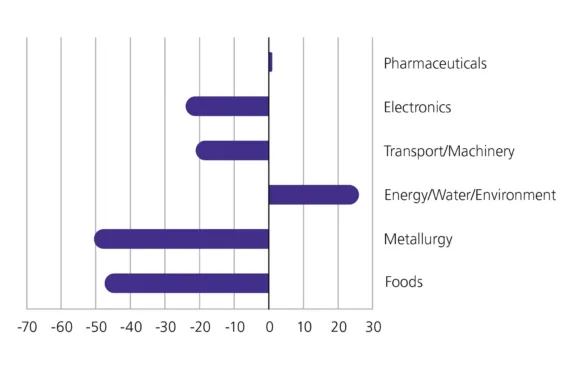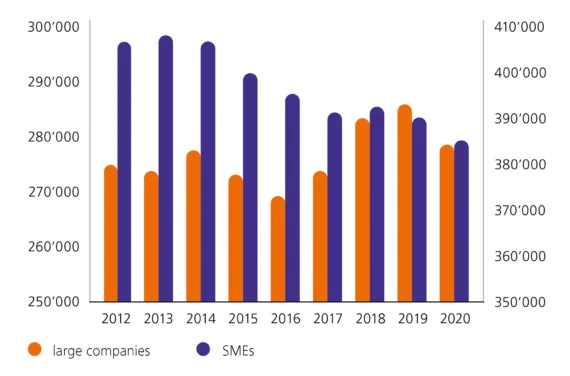How innovative is the Swiss manufacturing industry?
Working in tandem with Swissmem, the Swiss Academy of Engineering Sciences (SATW) has conducted its 3rd analysis of the innovative strength of the Swiss manufacturing industry. The results show that the number of industrial companies in Switzerland that engage in research and development activities is decreasing. However, this observation does not apply to all sectors.

Employment in the industrial sector is declining: an estimated 1 in 20 jobs disappeared between 2011 and 2020. Moreover, small and medium-sized enterprises (SMEs) in particular have found it increasingly difficult to increase their turnover by leveraging R&D expenditure to create innovative products. But there is also good news: SMEs in the Energy, Water and Environment sectors (NOGA class) pursue considerably more R&D domestically than in the previous reference period. The number of employees in these companies has also increased.
Lower costs for end customers
How to explain the different observations? Claudia Schärer from SATW and her team took a closer look: Most of the companies in the NOGA class Energy, Water and Environment are power plants, sewage treatment plants and waste recycling plants. R&D projects here are primarily aimed at optimising processes and improving efficiency. Rather than give rise to new products and services, the outcome of these R&D efforts tend to be cost savings for customers. In addition, many companies in this NOGA class operate under capped profit margins: Efficiency gains do not improve their margins, but rather improve the bottom line for end customers.
Innovativeness boosts economic activities
Why do we need to consider the innovative strength of Swiss industry? In Switzerland, 16% of the workforce is employed by the manufacturing industry. These workers generate 40% of Swiss gross domestic product. A highly innovative industrial sector greatly contributes to Switzerland's position as a thriving business location. The SATW's current analysis of innovative strength considers innovation in Swiss industry from various angles and includes recommendations for policymakers, business leaders and researchers.


About the study
In contrast to the macroeconomic analysis found in various national and international studies, the SATW's analysis of innovative strength focusses on the Swiss manufacturing industry. It examines indicators that shed light on industrial research and development activities. The corresponding data was drawn from the SERI-commissioned Innovation Survey conducted every two years by ETH Zurich’s Swiss Economic Institute (KOF). However, the analysis of innovative strength is presented in an independent report by the SATW. The value-added and employment figures were provided by the Federal Statistical Office (FSO).
Contact
Author



